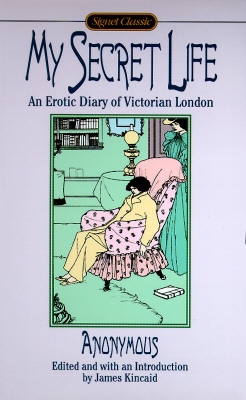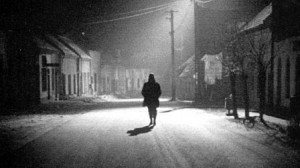(Charles)Book&Record – Tradition
Author/editor Zack Wentz (The Garbageman and the Prostitute, newdeadfamilies.com) has teamed up with Taj Easton and Shelby Gubba to create a new multi-media project called (Charles)Book&Record. “Tradition” is the third video in a triptych, part of what they call “sci-fi-surrealist-soul.” The first video, “Pointing South,” premiered at Juxtapoz, and the second, “Sentimental Ape,” at Geek.
Their debut album, Leftover Magic, was recorded and mastered at Singing Serpent studios in San Diego, CA., and will be released digitally by the band in January, 2013.
Remixes are forthcoming from Rafter, Xiu Xiu, and FUNERALS, as well as a serialized movie, related to the band/album, entitled Bad Dreamer. Taj Easton and Zack Wentz were also commissioned to create a soundtrack for the short Andy Mingo film Romance, based on a short story by Chuck Palahniuk (Fight Club), which debuted in London at the Raindance Film Festival in the fall of 2012.
Matthew Vollmer: Inscriptions for Headstones
I saw Matthew Vollmer’s Inscriptions for Headstones on the floor, alongside a gun cleaning kit and a disc golf disc and a dead spider. I picked it up. I actually began the book thinking I would skim through it, maybe perusing a third, just seeing what it was all about. I read the entire book, from first to last page, in one sitting. This doesn’t happen to me very often.
The text is 30 short essays, crafted as epitaphs, each one unfolding in a single sentence. On reading this idea, I thought, “That seems a bit much. That might be gimmicky.”
It actually works. Why?
The epitaph concept (a sort of “appropriated form”—a type of structure I’m into lately) adds many echoes, many layers, many possibilities. We arrive immediately on significant terrain—death. And a summary of life. We enter a mood of meditation, of introspection, not so unlike a walk through a cemetery (30 headstones aligned). And what is an epitaph on a headstone? First, a lie (actual epitaphs are 99% abstract and pithy and positive), but then instantly an absurdity (the measuring up, in a few words, on a stone). But, if you twist the epitaph (one concept of appropriated form work is to make it your own, to take the original—whether a complaint letter, Facebook post, list, whatever—and morph the form to your unique intent and way and need, etc.), lengthen the epitaph, broaden the epitaph into a lyrical remembering, the form can open us up to questionings. It can even lead us to ask, “What is life?”
The one sentence works, too.
November 13th, 2012 / 3:35 pm
Crowd Sourcing Question: What are the essential texts of third wave feminism?
Helpful suggestions greatly appreciated. I’m trying to put together a research list, and thought others might also be interested.
I posed this question on Facebook last week, and I got some good recommendations. I also got a sense that there’s some confusion over what constitutes “third wave.” (Does Camille Paglia “count”?) While I have a general idea about the distinctions between first, second, and third wave, I’d like to be more familiar with the important works that contribute to this specific conversation.
So here are the suggestions I received via Facebook…please help to increase and/or complicate the list…many thanks…
My Secret Life – An Erotic Diary of Victorian London (1902) – Selected Subheadings
 My aunt’s backside. – Haymaking frolics. – Romance and sentiment. – My father dies. – A wet dream. – My letch for a little one. – Funking consequences. – Nelly consents. – Fred looks on. – A saucy valet. – Low-class fucksters. READ MORE >
My aunt’s backside. – Haymaking frolics. – Romance and sentiment. – My father dies. – A wet dream. – My letch for a little one. – Funking consequences. – Nelly consents. – Fred looks on. – A saucy valet. – Low-class fucksters. READ MORE >
November 12th, 2012 / 5:20 am
Who Are The Tribes, by Terrance Hayes
Pilot Books publishes limited edition poetry chapbooks and comics from the likes of Matthew Zapruder, Mary Ruefle, and Jessica Fjeld. They contend that “innovative work demands innovative design,” so: “all of our books are designed and printed in ways unique and luminous to the manuscript itself. We take the editorial and design process as a seriously creative act, one that gives the poems an opportunity to live a physical life that the reader can interact with in new ways.”

They’ve been at it for five years. All of the books are beautiful, but none more beautiful than Who Are the Tribes, their latest offering, by Terrance Hayes. The book was produced in a limited letterpress edition of 300, bound in a double pamphlet handstitch, with illustrations (pen-and-ink drawings, it looks like) by the author.
The text is a single poem in 15 parts, and it is wild, formally and otherwise.
The first movement, “1. BEEFS,” begins with a spreadsheet in which the rows are delineated Tribe, Color, Poison, Smoke, Loves, and the columns are 1st, 2nd, 3rd, 4th, and 5th. Each tribe is given a name (ANTLER, SPIKE, QUIXOTE, BILL, and SIXFOUR) READ MORE >
I am drinking Juicy Juice and scouring the Internet for action figures based on my favorite childhood comics & cartoon franchises while complaining about—nay, BEMOANING—capitalism’s failure to deliver to me precisely what I want
Four or five years ago, for my birthday, I bought myself Neca’s Teenage Mutant Ninja Turtles figures—the awesome ones based on the original Kevin Eastman & Peter Laird’s original comics, like so:
They are so utterly badass. They all have red bandanas, for one thing, and they also have tails, which got clipped from the later TV cartoon versions because they looked like—penises, I guess.
As you can readily see, I am a proud owner of these figures:
Animal Cooperative

Two or so years ago I delusionally signed up for OkCupid, uploaded the one photo in which I did not look like a turtle from an oncology ward, scoured my matches for Caucasian girls between the ages of 22-25 who liked Animal Collective, and messaged them with the intention of jumping into an aurally heightened relationship immediately after some indiscretionary coitus. I was rebounding hard, slowly going soft. I didn’t like Animal Collective, but somehow had it in my mind that I would like a girl who did: precociously artsy, preciously depressed, and pretentiously insane. The lie I told myself of who would make me happy was the masochistic prophecy of who could make me miserable. “Cool, I like Animal Collective too,” the douche in me wrote. Not one of them wrote back. My favorite track off The Beatles’ Magical Mystery Tour (1967), is George Harrison’s “Blue Jay Way,” a dead end road in the LA hills. He’d play a part, then play it backwards, then learn to play the backwards version, record it, then play that backwards, so that the orientation was forward again. Its dissonance eerily familiar. One cannot go backwards in time, only melody. John famously claimed he was the walrus through implicated tusks, churning away at the meta. I sign up for Match dot cum, the co-op of lonelies, my credit card number longer than my patience for the questionnaire. I end up surrounded by sweaty kids getting epileptic to four bros on stage, Δ9-THC’s trail ribboning in the air, trying to be somebody, a person who someone else would write back to. All the world’s a stage, covered in Miller lite. Someone smiles, my mask shows nothing.
Some Notes on the First Two Poems in Saint Monica, by Mary Biddinger

Saint Monica begins with an entry from the online Patron Saints Index. It goes like so:
Memorial: 27 August
Mother of Saint Augustine of Hippo, whose writers about her are the primary source of our information. A Christian from birth, she was given in marriage to a bad-tempered adulterous pagan named Patricius. She prayed constantly for the conversion of her husband (who converted on his death bed), and of her son (who converted after a wild life). Spiritual student of St. Ambrose of Milan. Reformed alcoholic.
Born 322 at Tagaste (South Ahrus), Algeria.
Died 387 at Ostia, Italy
Patronage: abuse victims, alcoholics, alcoholism, difficult marriages, disappointing children, homemakers, housewives, married women, mothers, victims of adultery, victims of unfaithfulness, victims of verbal abuse, widows, wives.
Then we get a dedication: “For all the girls with names that begin with M.” The reader notices right away that the author’s first name begins with M.
Already, by the dedication, before the first poem begins, the reader is attuned to a strange quality that attaches to the cult of saints, which is that their personhood is inextricably mingled with the personhood of the latter-day people who revere them. Saint Monica, mother of St. Augustine, was born in Africa in the fourth century, and died in Italy sixty-some years later. What has that to do with American girls whose named begin with M., in the twenty- and twenty-first century? What is the relationship between the Saint Monica of help and reverence and the Saint Monica who gave birth to a son, took up and then gave up devotion to alcohol, and studied with St. Ambrose, more than 1700 years ago?
Time and tradition have warped a flesh-and-blood person into an abstraction READ MORE >
Pasolini: Observations on the Long Take
I’ve been thinking about the cinematic long take a lot lately. I’ve always been obsessed with the long take. Among my favorite directors are Tarkovsky, Pasolini, Wong Kar Wai, Tsai Ming-liang. And lately I’ve been watching Bela Tarr on repeat. Like all his films over and over again, because I’m convinced that his use of the long take is accomplishing something very different than these other directors, a sort of reaching of a moment of clarity that results not in understanding but something else. Maybe something like the feeling of intimacy and claustrophobia and fear and relief that comes with giving a confession. Anyways, more thoughts on this coming soon. In the meanwhile, I wanted to post up Pasolini’s great essay on the long take. It framed a lot of thinking about the long take in film, what it means, etc. Sharing the essay with you below…

Werckmeister Harmonies dir. Bela Tarr
***
Observations on the Long Take
By Pier Paolo Pasolini
Translated by Norman MacAfee and Craig Owens
. . . .
Consider the short sixteen-millimeter film of Kennedy’s death. Shot by a spectator in the crowd, it is a long take, the most typical long take imaginable.
The spectator-cameraman did not, in fact, choose his camera angle; he simply filmed from where he happened to be, framing what he, not the lens, saw. [1]
Thus the typical long take is subjective.
In this, the only possible film of Kennedy’s death, all other points of view are missing: that of Kennedy and Jacqueline, that of the assassin himself and his accomplices, that of those with a better vantage point, and that of the police escorts, etc.
Suppose we had footage shot from all those points of view; what would we have? A series of long takes that would reproduce that moment simultaneously from various viewpoints, as it appeared, that is, to a series of subjectivities. Subjectivity is thus the maximum conceivable limit of any audiovisual technique. It is impossible to perceive reality as it happens if not from a single point of view, and this point of view is always that of a perceiving subject. This subject is always incarnate, because even if, in a fiction film, we choose an ideal and therefore abstract and nonnaturalistic point of view, it becomes realistic and ultimately naturalistic as soon as we place a camera and tape recorder there: the result will be seen and heard as if by a flesh-and-blood subject (that is, one with eyes and ears).
Empire

On July 25, 1964 between 8:06 p.m. and 2:42 a.m., Andy Warhol filmed the Empire State building from the 41st floor of the Time-Life building. The 6 hour and 36 minute footage was then played at 2/3rds the speed, totaling 8:05 hours, with specific somewhat antagonistic parameters to be shown without abridgement. One imagines Warhol’s habitual shades as his own private darkened viewing of the slowness of time. In 2000, the Andy Warhol Museum created a 60 minute more watchable DVD of the film. Impatience is the best target audience. As the summer night descends in the first hour with pixelated humidity, the film enters its main inert narrative of exterior floodlights flickering in complete darkness. In 1993, Tom Hanks and Meg Ryan would meet atop the same building, hashing out some nuptial narrative about serendipity, and more DVDs would be sold, Don Delillo now hunched over a computer typing sparse prose about his city unplugged from the square constellations of office windows arranged in the same grid by which the streets and avenues are marked. The “unwatchability” of the film supposedly gave it meaning, like a sun so apparent by its target you trust is there without actually looking. Insecty specs from the film’s graininess betray its mimesis, and one is reminded of frames traversing over a lens with Platonic cave-like allegory. The kooks waiting for the Mayan 12-21-12 are giddy about the environment, proposing a premature end to our days. Of course, when the house lights come back on, you may consider the passed boredom a kind of performance art. Our hurricane is most unique, her chronic connectivity and swift dissemination unable to communicate the end of the world. If only we could end this world by stop counting. The deprivation of an online moment, after the battery dies, may be so fecund with actual moments — the hourglass time of a dripping faucet; the cracking jaw of a yawning cat; a fly whose mind knows not what a windowpane is — there won’t be enough film to film it. I fantasize about the end, the last text I send. Four years later, Warhol will be shot. He had misplaced a crazy person’s script, as life itself doesn’t have any lines.




